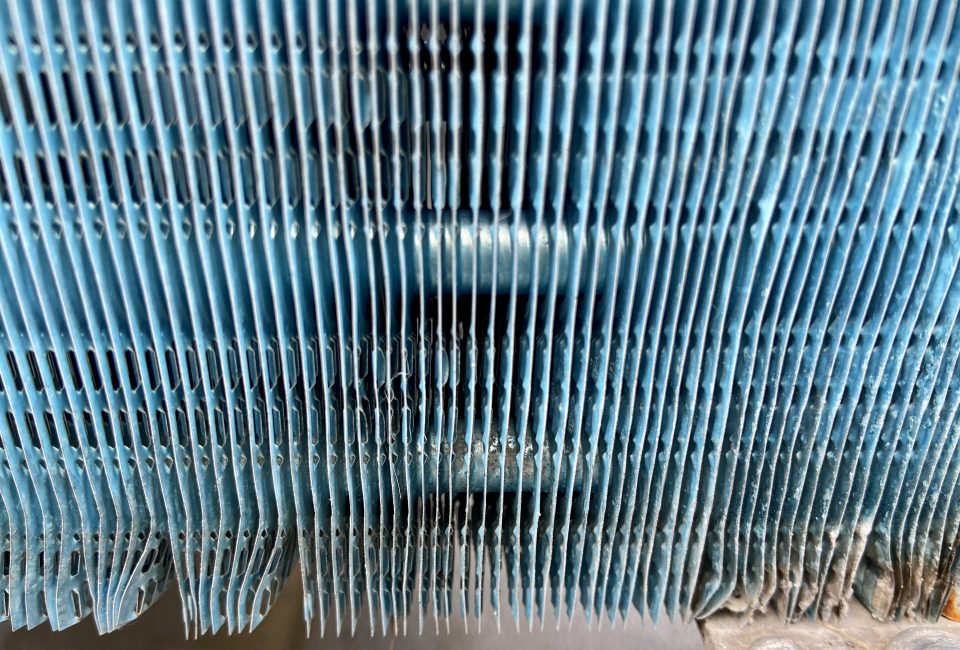Coils on air source heat pumps are delicate things. They are made from Coca-Cola can thin sheets of aluminium with copper tubes running through them. I have been lucky enough to see these things made a few times. There is a punch press that hammers holes in the sheets, and no matter where you go the punch presses are German-made monsters that make the ground shake. Another German machine then pushes tubes through the holes in the aluminium sheets and then expands the tubes so they grip the aluminium fins. It is a thing to behold and I would show you a video, but the factories are “no camera” zones, which is a shame.
The coils are expertly handled in the factory and nowadays they can even bend them after they are completed. It’s mind boggling. But once the unit is in the box the couriers and the handlers often manage to damage the coils.
Anyone who has installed an air source heat pump or air conditioning unit knows full well that you only have to look at the coil and it bruises. Consumers and homeowners panic, and we (as installers) get phone calls from people that start talking about fin combs. More on that in a minute.
So if your brand new unit comes with a bruise on the coil, does it matter? Will the unit perform poorly or inefficiently? To answer that, let me break things down. My Samsung units (insert any manufacturer name here for that matter) have 10 coils, each double thickness and averaging 13 passes (tubes which cross the coil) per coil.
Each coil has a capacity of about 1.3kW, divided into 13 passes, so each pass has a capacity of about 100 watts. There is one pass behind the other, and the coils are two coils deep. So very roughly, every centimetre of coil (10mm for the SI geeks) represents 2 watts, (1 watt per pass, and there is one behind the other). If you have a bruise covering 10cm of coil you loose 20 watts. For a machine that gives 13kW, I don’t think you will notice that loss.
Occasionally we get asked if a slight bruise is OK. Our advice is to leave it. Don’t comb it! The fins tear if you do this and the coil ends up looking dog-eared at best.
Once a year, we also come across a homeowner that pressure washes the coils during maintenance. The coil looks like flattened tin foil when they’re done, and will never work again. Please do not use a pressure washer on your air source heat pump.
In closing, the coil on the back of the unit is only half the picture. What about the plate heat exchanger that transfers heat to the water? Every refrigerating machine is finely balanced. The coils are sized to match each other and the compressor. Everyone panics about the bruised coil you can see but no one seems to care about the plate heat exchanger that is full of flux, PTFE tape and magnetite.
So when you next have someone in to maintain your unit, slip them a fiver and ask them to flush the heat exchanger backwards. You only need a hose pipe to do it, and you will be amazed by what has collected in there.


